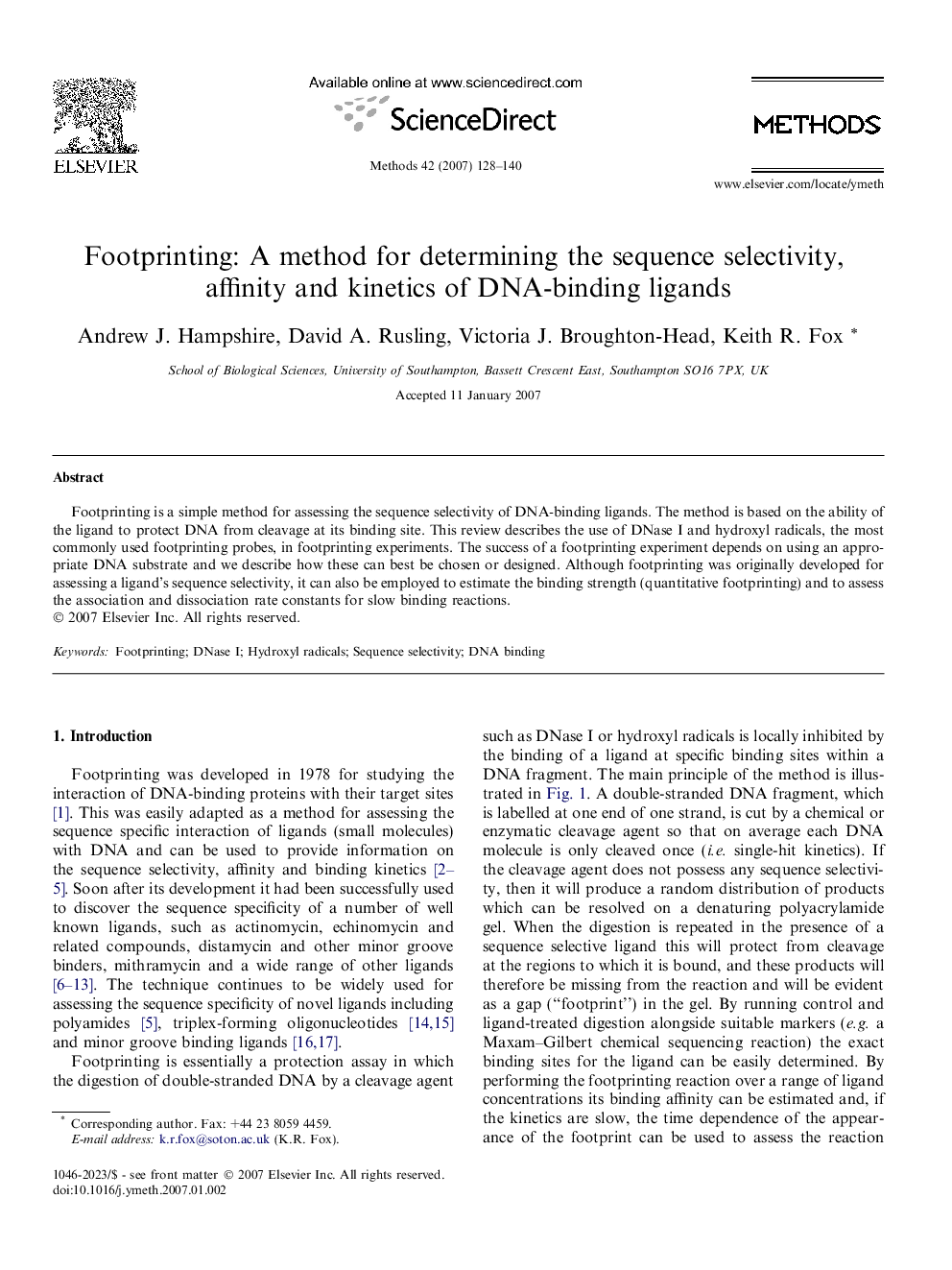| Article ID | Journal | Published Year | Pages | File Type |
|---|---|---|---|---|
| 1994568 | Methods | 2007 | 13 Pages |
Abstract
Footprinting is a simple method for assessing the sequence selectivity of DNA-binding ligands. The method is based on the ability of the ligand to protect DNA from cleavage at its binding site. This review describes the use of DNase I and hydroxyl radicals, the most commonly used footprinting probes, in footprinting experiments. The success of a footprinting experiment depends on using an appropriate DNA substrate and we describe how these can best be chosen or designed. Although footprinting was originally developed for assessing a ligand’s sequence selectivity, it can also be employed to estimate the binding strength (quantitative footprinting) and to assess the association and dissociation rate constants for slow binding reactions.
Related Topics
Life Sciences
Biochemistry, Genetics and Molecular Biology
Biochemistry
Authors
Andrew J. Hampshire, David A. Rusling, Victoria J. Broughton-Head, Keith R. Fox,
